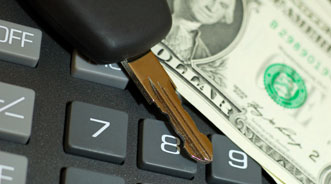Comerica: Auto Affordability Improves in Q3

Comerica Bank's newest Auto Affordability Index showed the purchase and financing of an average-priced new vehicle took 23.1 weeks of median family income in the third quarter of this year.
Analysts found consumers on average spent $75 less on new models in the third quarter than they did in the second quarter. The historical series for 2011 and 2012 has been revised, based on more up-to-date annual family income data.
"Auto affordability improved by 0.2 weeks of median family income, enough to boost Q3 auto sales to a 14.9 million unit rate in September," said Robert Dye, chief economist at Comerica Bank.
"Income growth through Q3 was weak, but interest rates on auto loans fell, lifting affordability. Given the combination of pent-up consumer demand and the need to replace vehicles destroyed by Hurricane Sandy, vehicle sales spiked to a 15.5 million unit rate in November," Dye continued.
"Sales may ease a bit in coming months, but ample credit availability and a low rate environment remain positives for the auto market. Downside risk from the Fiscal Cliff is significant for auto sales and many other U.S. economic variables through the first half of 2013," he went on to say.
Comerica reiterated that this report incorporates the latest data on consumer spending on light vehicles and on the terms available on auto loans. The full history of the index is available upon request.
"Some historical data is in the process of being revised by the data sources and, as a result, revisions to the auto affordability series are expected in the months ahead," analysts said.
More Discussion about Economy, Fiscal Cliff
Dye and the rest of Comerica's analyst team didn't use many positive adjectives to describe where there U.S. economy is heading as the year draws to a close.
"With the election behind us and hurricane season brought to a dramatic conclusion by Hurricane Sandy, the U.S. economy lurches, stumbles or fades at the end of 2012," Dye said. "The three verbs all imply a transition from the deceptively solid 2.7 percent rate of real GDP growth in Q3, to something less solid, and perhaps less deceptive, too, in late 2012 through early 2013.
"That there is a transition is evident. The quality of the transition is not entirely evident," he added.
To explain his point, Dye acknowledged a "lurching" economy may still recover. He pointed out the current condition has elements pushing it in a positive direction, such as housing and consumer spending. But he noted there are factors elements pulling the economy back to recession, such as the Fiscal Cliff.
"A stumbling economy has fewer positives perhaps consumers have leaned out too far over their skis and will pull back in early 2013," Dye said.
Dye also cautioned about the possibility that business investment could freeze even more than it did in Q3.
"A fading economy simply loses momentum," Dye said. "The run-up in inventories and government spending that supported the 2.7 percent growth rate of Q3 real GDP now fades, and there is nothing there to take up the slack."
Bottom line: where does Comerica place the chances of recession when 2013 arrives?
Dye said all of the factors "imply a heightened probability of recession for the first half of 2013, subjectively now placed at 40 percent."


